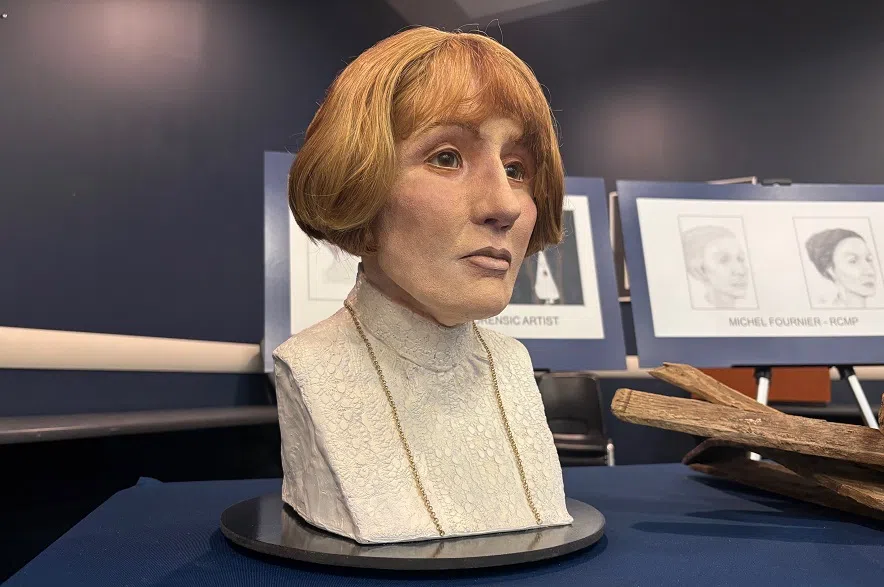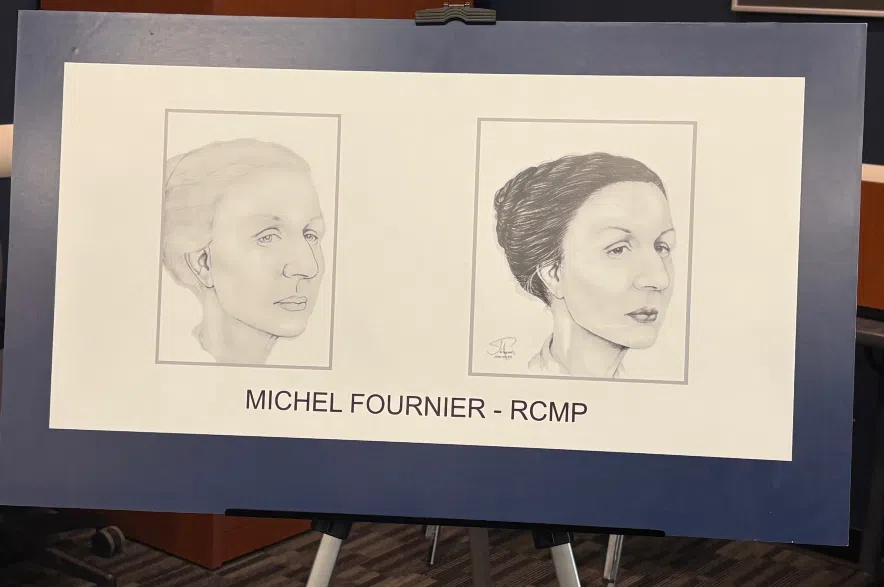After almost two decades of work, Saskatoon Police Service (SPS) has solved a century-old mystery to uncover the identity of “the woman in the well.”
On June 29 in 2006, human remains were found in a well at a construction site in the Sutherland neighbourhood, and an autopsy confirmed the death was suspicious.
Read more:
- Irene Scherban: Missing Saskatchewan teen ‘not forgotten’ 50 years later, says RCMP
- Saskatoon police briefs: Driver dies in single-vehicle rollover near Dundurn
In August 2025, through DNA testing SPS investigators identified the woman as Alice Spence, formerly Burke. The last record of her dates back to the early 1900s.
“Alice was never forgotten about and against what seemed like impossible odds, investigators continued to scour every avenue of investigation that was available to them at the time,” said Sergeant Darren Funk, lead investigator of the case.
“Our perseverance paid off and through many friendships and advances of technology, our woman in the well was given her name,” Funk said.
Funk said he chose to take on the case in January 2025 because it was one of the oldest on record.
He reviewed the case file in detail, analyzing two decades of investigative work and expert reports. Over the years police received hundreds of tips.
“I understood that a woman in the well was a Caucasian female of Irish ancestry. She had been assaulted, perhaps killed, put in a barrel and thrown down a well,” Funk said, however he did not elaborate further on the circumstances of her death.
“She was approximately five-foot-one, in the age range of 25 to 35, and died sometime between 1910 and 1925 — with a more targeted date between 1915 and 1920.”
Funk said investigators had ruled out more than 50 other women using DNA in some cases, and others through research and investigation.
Genetic genealogy a major breakthrough
A major breakthrough in the case was through the help of the Toronto Police Service and the use of investigative genetic genealogy, a technique that combines genealogy research with DNA analysis.
According to SPS, it is believed that this case is the oldest in Canada to be solved with investigative genetic genealogy.
The investigation also relied on assistance from the University of Saskatchewan’s Department of Archeology, Saskatchewan Coroners Service, Western Development Museum, and the City of Saskatoon’s archives, as well as the city’s infrastructure services.
Spence’s remains were well preserved due to the contaminated ground and water levels. Clothing, glassware and remnants of a wooden barrel were also found in the well and studied.
Forensic anthropologist Dr. Ernie Walker, who assisted in the investigation, said two teeth and hair were extracted as DNA samples.
“I always thought that the victim Alice Spence wanted to be found and wanted to be identified,” Walker said.
He said the investigation was able to uncover Spence’s personal history and track record within the community.
“Alice Spence is not invisible anymore,” he said.

Cindy Camp, the great-great granddaughter of Alice Spence, says DNA technology has brought closure to her family. (Mia Holowaychuk/650 CKOM)
The investigation also found the descendants of Spence, one of them being her great granddaughter Cindy Camp.
“We feel a deep sense of connection, not only to Alice, but to the generations of women who have come before her, women whose stories deserve to be known,” Camp said.
“It’s truly amazing how something as powerful as genetic genealogy can help solve long-forgotten mysteries and bring closure to families like ours.”
According to the SPS, the case is now considered closed.
“We have circumstantial evidence that we believe we know who did it, but it’s 100 years old that person does not have the right to defend themselves in court today,” Funk said.
Who was Alice Spence?
The SPS investigation revealed that Spence was born in September 1881 in Michigan. She is one of five children and worked as a seamstress and clerk.
According to a Minnesota marriage certificate, she married Charles Irvine Spence on August 1, 1904.
In 1913, she moved with her husband and daughter Idella Spence to Sutherland, Saskatchewan.
A 1916 census shows the family living in Saskatoon, which is also the last record of Spence.
The investigation also uncovered a news article from February 1918 titled Spences Home in Sutherland Destroyed, which has little detail other than nobody was home at the time and nothing was saved.
Spence’s remains were buried in an unmarked grave at the Woodlawn Cemetery on Sept. 29, 2009.
Read more:












